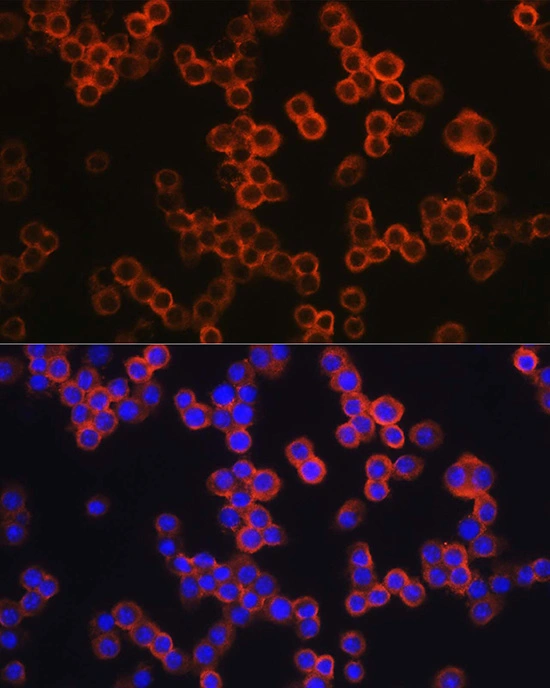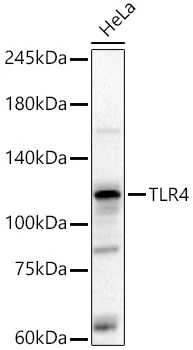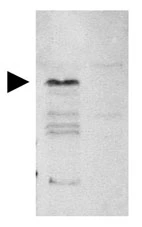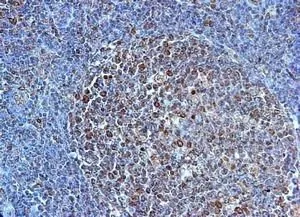
ICC/IF analysis of RAW264.7 cells using GTX64330 TLR4 antibody. Orange : Primary antibody Blue : DAPI Dilution : 1:200
TLR4 antibody
GTX64330
ApplicationsImmunoFluorescence, Western Blot, ImmunoCytoChemistry, Other Application
Product group Antibodies
TargetTLR4
Overview
- SupplierGeneTex
- Product NameTLR4 antibody
- Delivery Days Customer9
- Application Supplier NoteWB: 1:500 - 1:2000. ICC/IF: 1:50 - 1:200. *Optimal dilutions/concentrations should be determined by the researcher.Not tested in other applications.
- ApplicationsImmunoFluorescence, Western Blot, ImmunoCytoChemistry, Other Application
- CertificationResearch Use Only
- ClonalityPolyclonal
- ConjugateUnconjugated
- Gene ID7099
- Target nameTLR4
- Target descriptiontoll like receptor 4
- Target synonymsARMD10; CD284; homolog of Drosophila toll; hToll; TLR-4; TOLL; toll like receptor 4 protein; toll-like receptor 4
- HostRabbit
- IsotypeIgG
- Protein IDO00206
- Protein NameToll-like receptor 4
- Scientific DescriptionThe protein encoded by this gene is a member of the Toll-like receptor (TLR) family which plays a fundamental role in pathogen recognition and activation of innate immunity. TLRs are highly conserved from Drosophila to humans and share structural and functional similarities. They recognize pathogen-associated molecular patterns that are expressed on infectious agents, and mediate the production of cytokines necessary for the development of effective immunity. The various TLRs exhibit different patterns of expression. This receptor has been implicated in signal transduction events induced by lipopolysaccharide (LPS) found in most gram-negative bacteria. Mutations in this gene have been associated with differences in LPS responsiveness. Multiple transcript variants encoding different isoforms have been found for this gene. [provided by RefSeq, Jan 2012]
- Storage Instruction-20°C or -80°C,2°C to 8°C
- UNSPSC12352203
References
- Effect of TLR4/MyD88/NF-kB axis in paraventricular nucleus on ventricular arrhythmias induced by sympathetic hyperexcitation in post-myocardial infarction rats. Wang K et al., 2022 May, J Cell Mol MedRead more





![FACS analysis of human peripheral blood monocytes using GTX28378 TLR4 antibody [HTA125] (FITC).](https://www.genetex.com/upload/website/prouct_img/normal/GTX28378/GTX28378_5590_FACS_w_23060722_630.webp)
